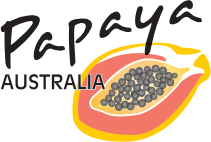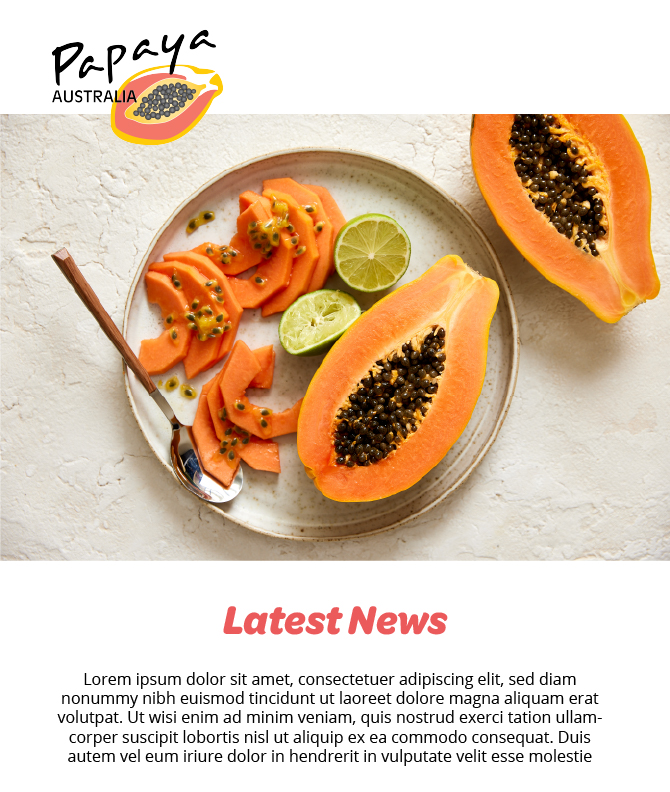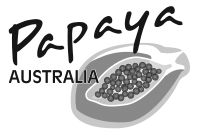For growers
Industry Resources and Levy Information
Best Practice Resources
The Papaya Industry Best Practice Resource has been funded by Hort Innovation using the papaya research and development funds and funds from the Australia Government.
Biosecurity
Biosecurity in papaya is essential to prevent the introduction and spread of pests and diseases that can significantly impact crop health and yield. Being aware of biosecurity concerns and implementing effective biosecurity measures helps safeguard the sustainability and profitability of papaya production.
Please click on the link below to see a list of the high priority biosecurity pests for papaya:
Having a biosecurity plan is important for ensuring that should a biosecurity incursion occur that the farming operation can return to business as usual as quickly as possible and the damage/cost of control of the incursion is limited. Please see the link to access the biosecurity manual for the papaya industry.
Biosecurity-Manual-for-the-Papaya-Industry.pdf (farmbiosecurity.com.au)
Reporting a biosecurity concern can be done online or through the Biosecurity Queensland hotline 13 25 23
Please see link for more information
PREPARATION AND NURSERY
Proper paddock preparation and nursery production are critical steps in establishing healthy papaya crops, ensuring optimal soil conditions and strong seedling growth. These practices help create a solid foundation for higher yields and long-term plant vitality.
Preparation
Nursery
Seed can be bought through Papaya Seeds Australia. Below are some notes for planting papaya seeds courtesy of Phill Slocombe (Papaya Seeds Australia)
The factsheet below is courtesy of Phill Slocombe, Papaya Seeds Australia.
GROWING
Growing papaya requires careful management of nutrition, irrigation, and pests and disease to promote healthy growth and high yields. Papayas thrive in well-drained soils with adequate nutrients and regular watering but are sensitive to environmental stresses such as drought, excessive moisture, and frost.
soil and nutrition
Nutrient requirement for papaya production literature review produced in 2021 as part of PP20002 funded through Hort Innovation using papaya R&D levy funds.
Factsheet coming soon. For more information contact emily.pattison@daf.qld.gov.au
Irrigation
Factsheet coming soon. For more information contact emily.pattison@daf.qld.gov.au
Spraying
Pests and diseases
Factsheet coming soon. For more information contact emily.pattison@daf.qld.gov.au
Fruit spotting bug
Factsheet coming soon. For more information contact emily.pattison@daf.qld.gov.au
Two spotted mite
Factsheet coming soon. For more information contact emily.pattison@daf.qld.gov.au
Video: Sharing the NT experience in Papaya Mealybug Management by Sachinthi Kithulgoda (NT DAF)
Video: Papaya Mealybug FNQ Preparedness by Bruno Rocha Tamelini (QDPI)
Black spot
Factsheet coming soon. For more information contact emily.pattison@daf.qld.gov.au
Brown spot
Factsheet coming soon. For more information contact emily.pattison@daf.qld.gov.au
Chemicals
post-harvest and supply chain
Post-harvest and supply chain management in papaya are critical for maintaining fruit quality and extending shelf life from farm to market. Proper handling, storage, and transportation practices help reduce losses and ensure that consumers receive fresh, high-quality fruit.
Post-harvest
Factsheet coming soon. For more information contact emily.pattison@daf.qld.gov.au
supply chain
Factsheet coming soon. For more information contact emily.pattison@daf.qld.gov.au




